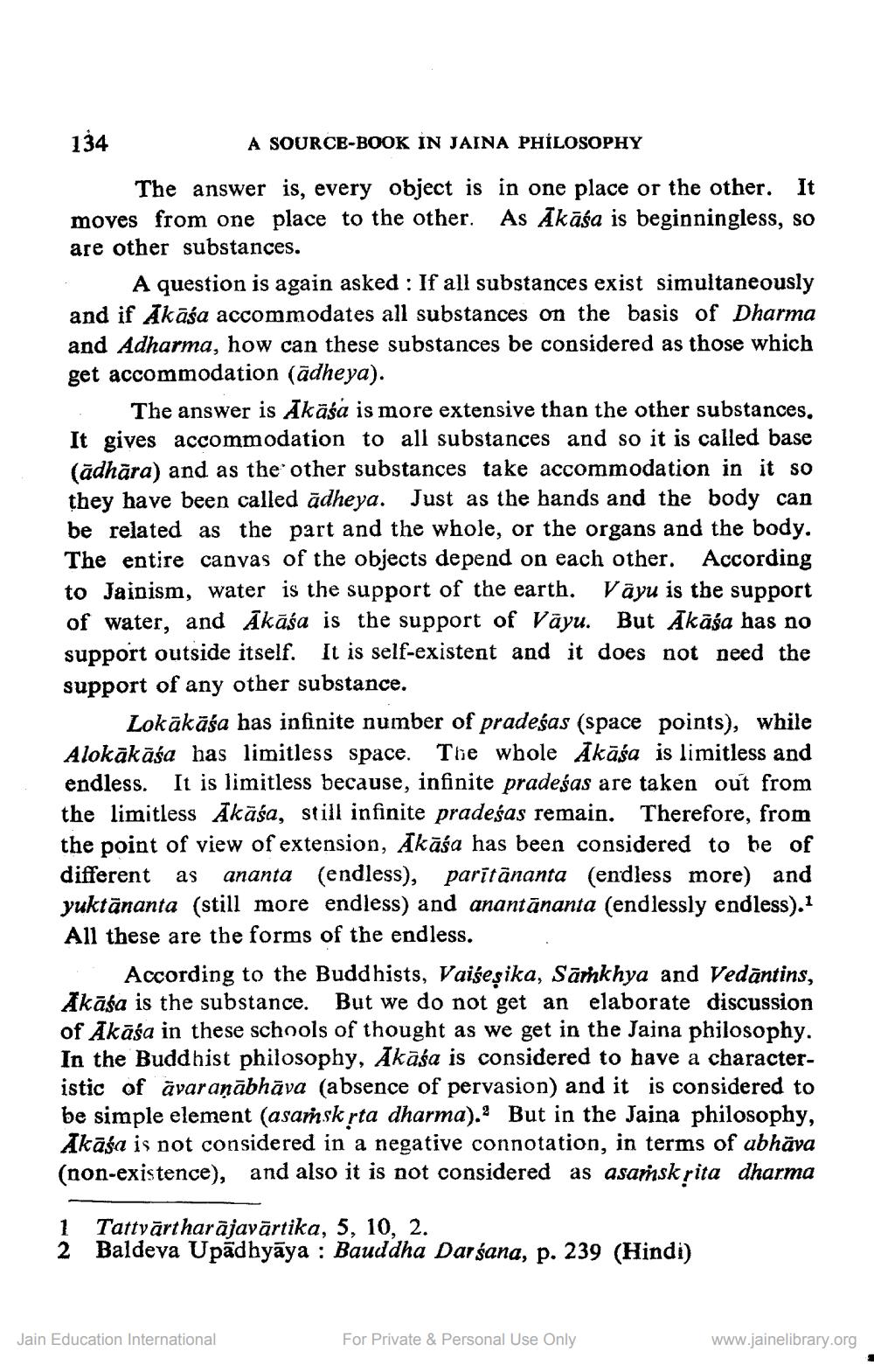________________
134
A SOURCE-BOOK IN JAINA PHILOSOPHY The answer is, every object is in one place or the other. It moves from one place to the other. As Ākāśa is beginningless, so are other substances.
A question is again asked : If all substances exist simultaneously and if Akāśa accommodates all substances on the basis of Dharma and Adharma, how can these substances be considered as those which get accommodation (adheya).
The answer is Ākāśa is more extensive than the other substances, It gives accommodation to all substances and so it is called base (ādhāra) and as the other substances take accommodation in it so they have been called ādheya. Just as the hands and the body can be related as the part and the whole, or the organs and the body. The entire canvas of the objects depend on each other. According to Jainism, water is the support of the earth. Vāyu is the support of water, and Akāśa is the support of Väyu. But Akāśa has no support outside itself. It is self-existent and it does not need the support of any other substance.
Lokākāśa has infinite number of pradeśas (space points), while Alokākāśa has limitless space. The wbole Akāśa is limitless and endless. It is limitless because, infinite pradeśas are taken out from the limitless Ākāśa, still infinite pradeśas remain. Therefore, from the point of view of extension, Akāśa has been considered to be of different as ananta (endless), paritānanta (endless more) and yuktānanta (still more endless) and anantānanta (endlessly endless).1 All these are the forms of the endless.
According to the Buddhists, Vaiśeşika, Sārkhya and Vedāntins, Akāśa is the substance. But we do not get an elaborate discussion of Akāśa in these schools of thought as we get in the Jaina philosophy. In the Buddhist philosophy, Akāśa is considered to have a characteristic of avaraņābhāva (absence of pervasion) and it is considered to be simple element (asanskrta dharma). But in the Jaina philosophy, Akāśa is not considered in a negative connotation, in terms of abhāva (non-existence), and also it is not considered as asamskrita dharma
1 2
Tattvārtharājavārtika, 5, 10, 2. Baldeva Upadhyāya : Bauddha Darśana, p. 239 (Hindi)
Jain Education International
For Private & Personal Use Only
www.jainelibrary.org




